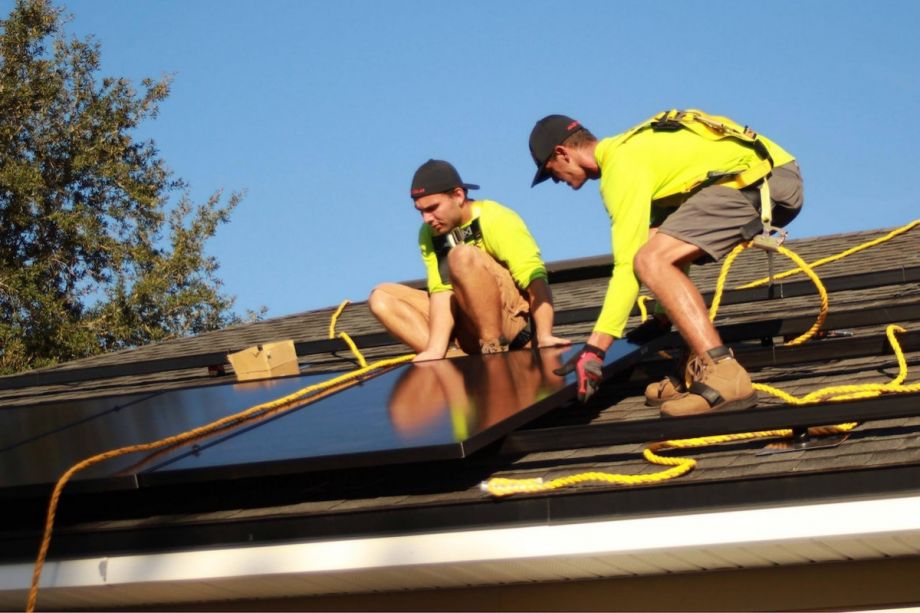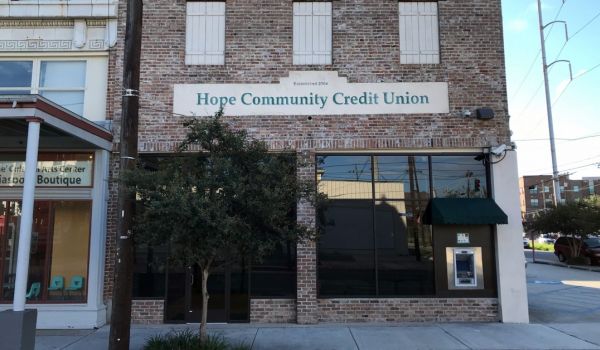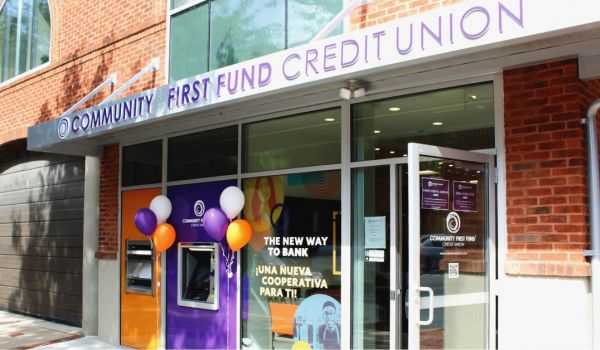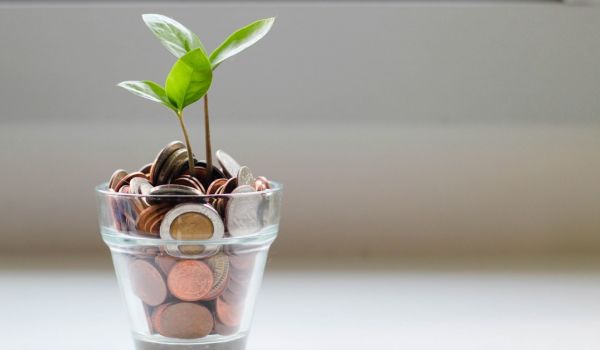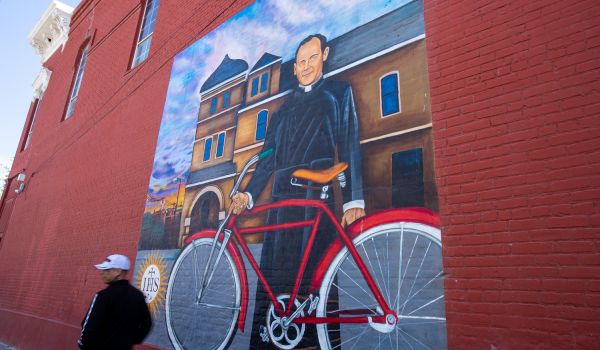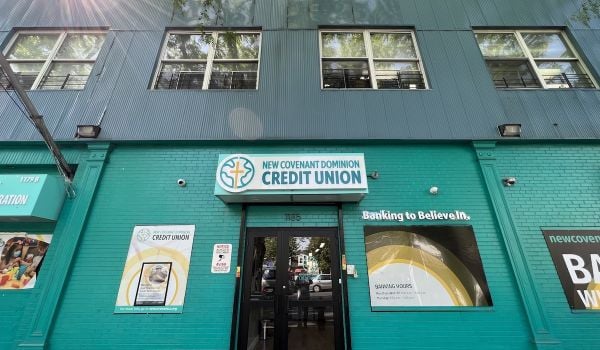Terri Mickelsen and about 7,500 of her friends aren’t waiting to jump into the green revolution. They’re members of Clean Energy Credit Union, where Mickelsen is CEO, and since 2017 they’ve already invested around $200 million in clean energy or other green loans for member households across the country, offsetting an estimated 700,000 tons of annual carbon dioxide emissions so far — equivalent to taking 152,000 gas-powered vehicles off the road permanently. Every month, they make another $6-8 million in green loans.
“I am kind of a credit union nerd who got together with some clean energy nerds as we were chartering a new credit union,” says Mickelsen, whose 25 years of experience in credit union operations began as a teller. “It’s a different type of credit union where it’s not based on a job that you have or where you live, it’s based on values.”
And there’s more. Around 300 credit unions across the country already have some kind of green loan product available, according to Inclusiv, a trade organization for credit unions that have a community development mission. That includes Cooperativa Jesus Obrero, a credit union that has financed 600 solar panel installations across 28 municipalities in Puerto Rico since it started doing so in the aftermath of Hurricane Maria.
In a survey of just 30 credit unions, Inclusiv tallied up more than $1 billion in green loans already on their books. The loans went for everything from solar panels, to electric vehicles, improved insulation, weatherproofing, air-source heat pumps, geothermal heat pumps, electric bicycles and more.
As impressive as that number may sound, it’s still hardly a drop in the ocean of investment needed to address climate change over the coming decades. But under the banner of its Greenhouse Gas Reduction Fund, the Biden-Harris Administration recently opened three grant competitions totaling $27 billion in potential funds that are meant to dramatically scale up the volume of green lending done by credit unions or community banks.
These institutions are already taking the lead on smaller-scale transactions that are just as necessary for decarbonizing the economy as larger projects around energy production and distribution networks.
“Where credit unions really come in is filling that niche for solar. It’s the consumer that needs a $20,000 [green loan], and then for small businesses, [green loans] between $50,000 and $200,000 that the banks don’t want to touch either,” Mickelsen says. “If it’s not a million dollar deal, it’s really sometimes not even worth it for a bank.”
While there are still plenty of details to be worked out when it comes to implementing the Greenhouse Gas Reduction Fund, the basic idea is to take a page out of the New Deal playbook. Back in its time, the New Deal policies made it possible for smaller, community-based lenders to play the lead role in financing the construction of millions of homes for first-time homeowners.
When New Deal-era policymakers decided they wanted to encourage and allow millions of families to acquire millions of suburban homes using 30-year fixed rate mortgages, they concocted a scheme that worked through community banks and credit unions. First, the lenders made the loans to developers to build the homes; then, they provided households with the 30-year mortgages to buy the homes. These 30-year mortgages were backed by federal mortgage insurance from the Federal Housing Administration, and could be sold to Fannie Mae after origination. Selling the loans to Fannie Mae freed up each lender to do many more loans than it would if it had to wait for the loans to be repaid.
It worked on a scale nobody had ever seen before. From 1934 to 1962, community banks and credit unions made $120 billion in FHA-insured home mortgages that they usually then sold to Fannie Mae. Unfortunately, New Deal Era policymakers also baked-in redlining into the FHA and Fannie Mae underwriting guidelines for community lenders, so more than 98% of those dollars went to white homebuyers to purchase homes in white-only suburban communities. Looking back today, it was also clearly not the greatest idea to focus all that lending to build up single-family, suburban style, car-centric communities.
Despite some poor choices in implementation, history still shows that, with the right kind of support at the federal policy level, little banks have a track record of collectively doing big things. Hopefully there won’t be any redlining this time around. On paper at least, the Greenhouse Gas Reduction Fund is shaping up to avoid those mistakes of the past. Inclusiv is also one of 19 organizations in the Community Builders of Color Coalition, which formed specifically to ensure the Greenhouse Gas Reduction Fund meets that promise.
“It’s a well-thought out structure,” says Cathie Mahon, CEO at Inclusiv, whose member credit unions focus on historically redlined or neglected rural and indigenous communities. “It’s up to us at the field level to figure out how to operationalize all of it.”
The Greenhouse Gas Reduction Fund has rolled out three grant competitions. First, the $6 billion Clean Communities Investment Accelerator intends to provide funds exclusively for training and technical assistance to community development financial institutions, credit unions, green banks, housing finance agencies and minority depository institutions to learn how to finance clean technology projects in low-income and disadvantaged communities.
Second, the $14 billion National Clean Investment Fund will provide grants to two to three “national clean financing institutions,” enabling new partnerships with private lenders to support more green investments across the country. At least 40% of these funds must be dedicated to support investments in “low-income and disadvantaged communities, including those that are rural communities, Tribal communities, communities with environmental justice concerns, energy communities, and persistent poverty counties.”
Third is the $7 billion Solar for All program, offering up to 60 grants to states, territories, Tribal governments, municipalities and eligible nonprofits “to create and expand low-income solar programs that provide financial and technical assistance, such as workforce development, to enable low-income and disadvantaged communities to deploy and benefit from residential solar.” It’s this pot of money that has many more municipalities and states looking into starting “green banks,” which are public or quasi-public wholesale financial institutions that partner with private lenders to make green loans more accessible and more affordable. There are now more than 20 green banks across the country since Connecticut Green Bank became the first back in 2011.
One of the most crucial pieces that needs to come out of all the above, most likely as part of the $14 billion National Clean Investment Fund, is some kind of secondary market vehicle — a “Fannie Mae” for green lending that can buy green loans from lenders and free them up to make more.
Fannie Mae and Freddie Mac, which Congress created in 1970 also to purchase residential mortgages from private lenders, both already have existing green loan purchasing programs. From 2012-2022, green loans purchased by Fannie Mae have financed a million housing units retrofitted or green building-certified, offsetting 749,000 tons of carbon dioxide emissions.
But many lenders like Clean Energy Credit Union and others in Inclusiv’s network are finding plenty of worthwhile loans that don’t conform to the standards for selling loans to Fannie Mae or Freddie Mac. The underlying borrower profiles are considered too risky or just outside the “credit box.” So the green loans these lenders are making aren’t eligible for Fannie Mae or Freddie Mac to pruchase, meaning lenders may have to slow down approvals or end up losing potential borrowers to online lenders who typically charge higher rates and fees than credit unions.
“Many credit unions already work with Fannie Mae but conforming loans are just not going to work with low-income, BIPOC and other historically disinvested communities,” Mahon says.
“For energy efficiency or clean energy loans to low- and moderate-income households or fixed income households, when push comes to shove, the loan repayment has got to be low enough that it’s either offset by the energy bill reduction or increasing the value of the home to make it worthwhile for a household to invest in,” Mahon says. “So those loans end up being a little more customized.”
Despite the extra work or the perceived (but not necessarily actual) risk of working with such borrowers, whenever credit unions in Inclusiv’s network start new green lending programs, they tend to reach their limits pretty quickly, Mahon says.
Clean Energy Credit Union has been getting by selling partial loans, also known as selling loan participations, to other like-minded credit unions across the country. It’s essentially using a network of local credit union partners as a secondary market for some of its loans. That’s how Clean Energy Credit Union has been able to make around $200 million in loans despite only having a balance sheet of just $57 million. Selling participations has the added benefit of helping the other credit unions learn more about what it takes to do green lending successfully — such as how to vet contractors, vet technology, and deal with unforeseen hiccups, like discovering a roof needs a full replacement before it can hold the weight of a new solar panel installation.
As another stopgap measure, Inclusiv recently launched its own green loan participation program, effectively serving as a makeshift Fannie Mae, only limited by Inclusiv’s own ability to fundraise for that work. The trade group is planning to submit an application to the National Clean Investment Fund to scale up what it’s already doing. At a certain point of scale, it might provide enough of a positive track record to get Fannie Mae or Freddie Mac to expand their programs and start purchasing the loans that lenders like Clean Energy Credit Union are already making.
“Stepping in with a loan participation platform for now can help kickstart new platforms while also allowing those that have started to keep growing,” Mahon says. “We have an eye that the participation work we want to do is a means to an end to influence some other secondary market vehicle, whether it’s Fannie or Freddie to expand their offerings, or some other private market vehicle.”
“We dove headlong into it largely on the basis of pioneers like Clean Energy Credit Union and Cooperativa Jesus Obrero,” Mahon says. “When we first started talking about this in 2018-2019, green lending was still a boutique product, and that’s really not the case any more.”
This article is part of The Bottom Line, a series exploring scalable solutions for problems related to affordability, inclusive economic growth and access to capital. Click here to subscribe to our Bottom Line newsletter.

Oscar is Next City's senior economic justice correspondent. He previously served as Next City’s editor from 2018-2019, and was a Next City Equitable Cities Fellow from 2015-2016. Since 2011, Oscar has covered community development finance, community banking, impact investing, economic development, housing and more for media outlets such as Shelterforce, B Magazine, Impact Alpha and Fast Company.
Follow Oscar .(JavaScript must be enabled to view this email address)



